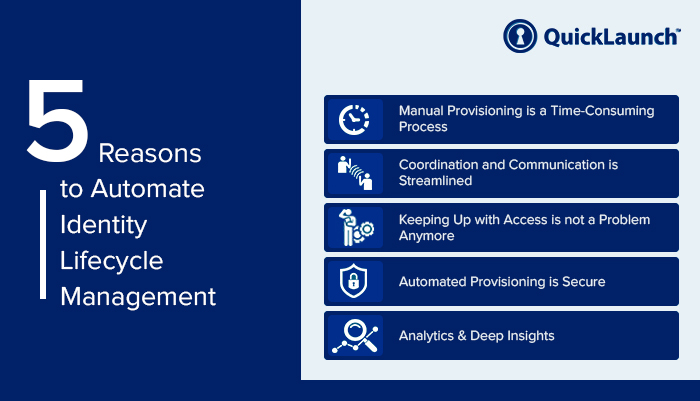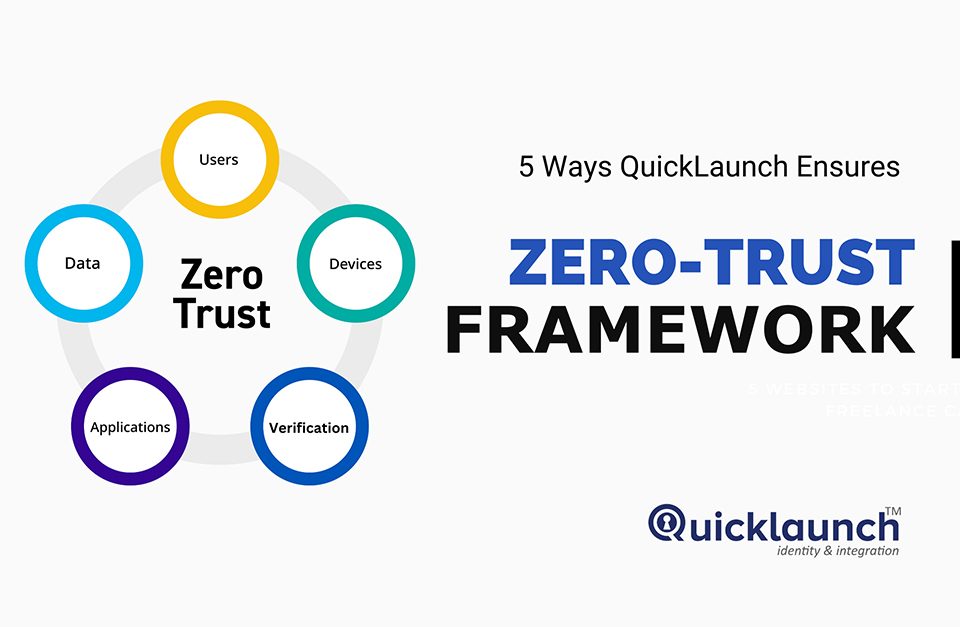
Why Higher Education Need a Fully-Functional Single Sign-On Tool?
January 30, 2020
Four Reasons to Choose a Single Sign-On Solution
March 30, 2020Did you know that 50-60% of today’s organizations are still relying on manual Identity and Access Management (IAM)?
While automated IAM eliminates the need for IT administrators to manually provision users and grant role-based access to multiple applications within the organization, manual IAM is laborious and error-prone.
According to a Forrester report, 47% of technology decision makers in different organizations have experienced internal data breaches. In these organizations, the technology decision makers relying on manual IAM technology fall victim to data breaches more often than the ones who secured their organizations with automated IAM solutions.
The report examined that there were multiple pitfalls of manual IAM over automated IAM technology. For example, manual IAM requires IT administrators to update and make changes to individual accounts, versus automatic, when the controls are adjusted, the related user accounts are updated automatically to restrict / allow access in real time. Automated IAM makes user lifecycle management easier and securer.
Why you should Automate Identity Lifecycle Management?
The modern identity environment demands a powerful Identity and Access Management solution that can deal with critical information and data pertaining to the users. Organizations need to know who is accessing what, where, when, why and how. Automated IAM solution can help the companies to be more productive, making a great impact on business results.
On an average, every IT administrator spends around 30 minutes per provisioning request. By automating user creation, managing their identity and access as their roles change and handling the clean-up process after users leave the organization, you can save money, time and headaches, all while creating a secure environment for your corporate resources.
If you have a manual identity and access management solution in place, you ought to make an investment in a powerful IAM solution to automate identity lifecycle management. Here are 5 reasons to automate identity lifecycle provisioning:

Manual Provisioning is a Time-Consuming Process
IT administrators of organizations spend 25-35 minutes per provisioning request. The total time spent in provisioning a user may increase if more number of applications are added, worsening up the situation. Your organization might have a common set of applications such as Office 365®, Banner®, Jenzabar® or Blackboard®. Everyone in the organization might have access to these applications and you only need to set up access once when a new employee joins.
Moreover, users with different roles within the organization might have access to different applications. You might start giving access to these applications to partners or contractors as well. This adds on to the provisioning requests received by the IT desk. You need to automate provisioning to save the time of your IT resources so that they can utilize it in a more productive task.
Coordination and Communication is Streamlined
How does Talent Acquisition (TA) tell IT when a new employee joins in? Most of the companies do this over an email adding to manual work for IT.
If IT administrators get a CSV file from the TA after changes have been made, they can process it and add the new employees to Active Directory. But, those scripts need to be updated when the vendor APIs are updated. The software running on a server should be kept up-to-date and secure. But, you must avoid the on-premise server and move to the cloud.
It is tough to automate as every user has a different role in the organization and have access to different apps. It is not just enough to have a tool which automatically imports from TA and provisions Active Directory, Google Apps or Office 365. You ought to build a strong logic in the process. You need to create new employee accounts before you grant the access.
Keeping Up with Access is not a Problem Anymore
We are well aware of the fact that different teams in an organization require access to different applications. E.g. Marketing team will require Salesforce and other marketing software tools and other teams might want to use collaboration tools like Slack. Apart from managing the access centrally, you now have a complex matrix of who has access to what, which is getting hard to manage using Excel spreadsheets.
The business teams should come up and tell the IT teams about the apps they require, and they should know who should get access to them and level of access. This will reduce the level of complexity.
Automated Provisioning is Secure
Security is one of the major aspects that automated provisioning brings into the picture. This starts with some basic insights on what users are accessing and verification that the users are deprovisioned from the application when they leave the organization.
Analytics & Deep Insights
The IT administrators can get complete insights of what type of access the users have, when was the user account created, when the account needs to be terminated, when was the access last updated, who has created the user account, and what all apps the user has access to.
Further, there are applications and systems to which all users don’t have access to. The IT administrators only have full control of these applications making the company environment more secure. Automate the discovery of user accounts in all the existing applications.
The Bottom Line
QuickLaunch Identity and Access Management is built on a foundation of cloud-centric IT architecture that equally works well with on-premise applications. QuickLaunch enables your IT resources to automate user provisioning instead of depending on the manual process. It strengthens your security and boosts overall productivity of your IT desk.
It is the time to change with technology. Think big, think QuickLaunch!




